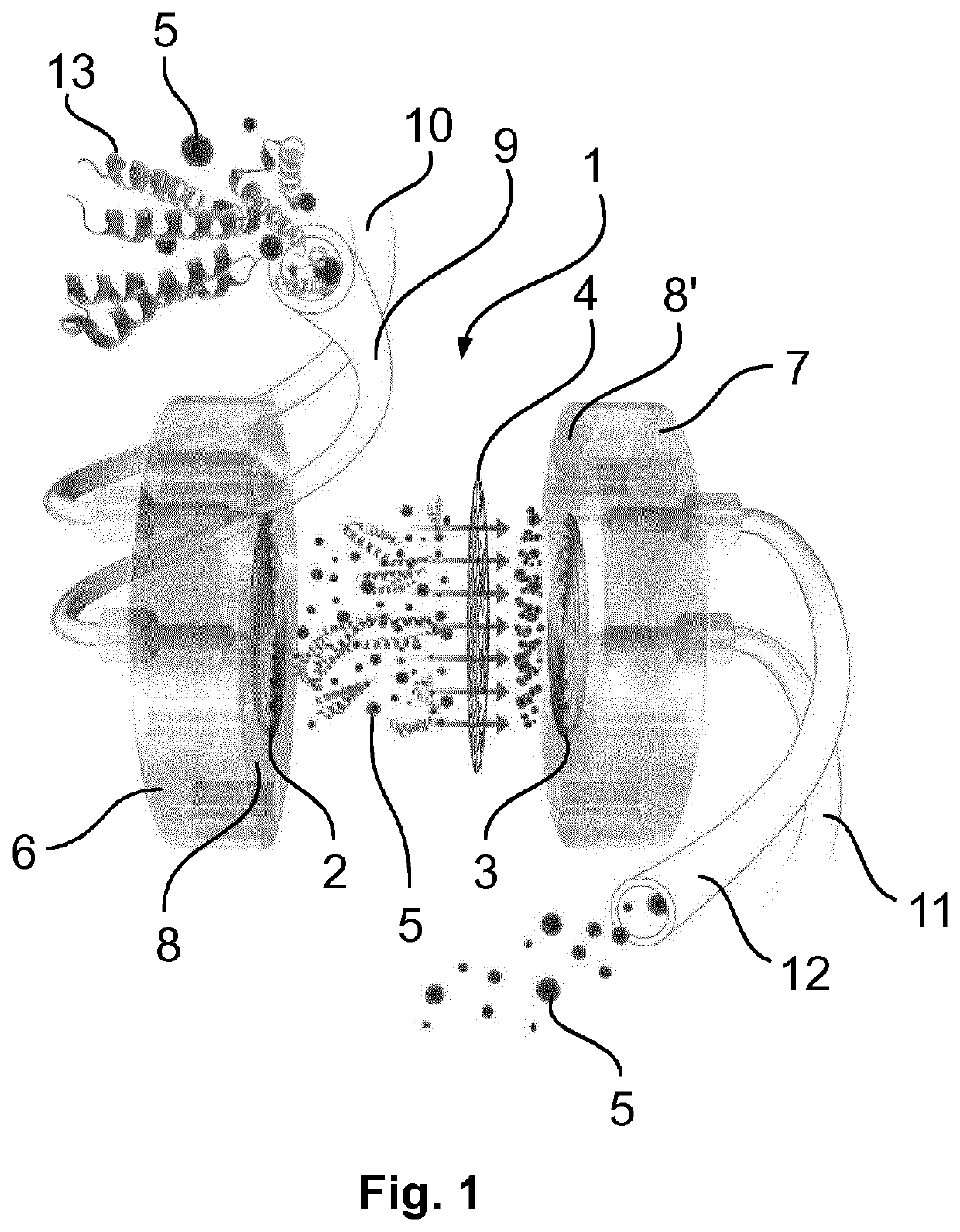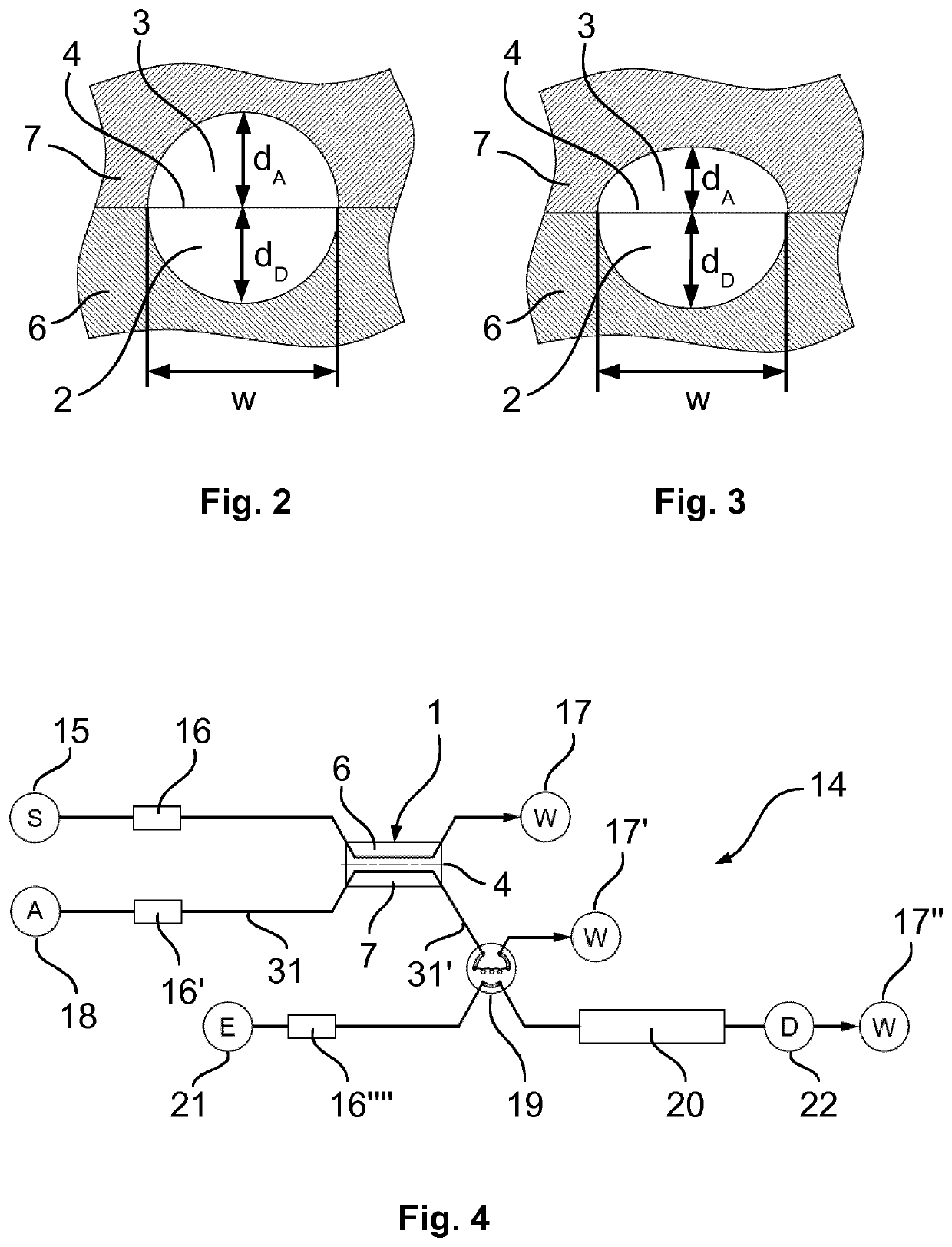Dialysis cell for sample preparation for a chemical analysis method
a technology of dialysis cell and chemical analysis method, which is applied in the field of dialysis cell for sample preparation for chemical analysis to achieve the effects of improving the removal of analyte(s), shortening the equilibration time, and improving the removal ra
- Summary
- Abstract
- Description
- Claims
- Application Information
AI Technical Summary
Benefits of technology
Problems solved by technology
Method used
Image
Examples
Embodiment Construction
[0066]As is evident from FIG. 1, one embodiment of a dialysis cell 1 according to the invention consists of two half-cells 6 and 7, between which a selectively permeable dialysis membrane 4 is arranged. On their contact surfaces 8, 8′ with the dialysis membrane 4, the half-cells 6 and 7 each have a spiral indentation which forms the donor channel 2 and the acceptor channel 3, respectively. The donor channel 2 is connected to a supply line 9, via which a sample can be supplied. Furthermore, the donor channel 2 is connected to a discharge line 10, by means of which the sample can be discharged after passing through the dialysis cell 1 and can be supplied usually to a disposal point 17. The acceptor channel 3 as well is connected to a supply line 11 and a discharge line 12. The supply line 11 and the discharge line 12 of the acceptor channel 3 can be united to form an acceptor circuit. The sample solution conducted through the donor channel 2 contains at least one analyte, which is dep...
PUM
| Property | Measurement | Unit |
|---|---|---|
| pore size | aaaaa | aaaaa |
| diameter | aaaaa | aaaaa |
| length | aaaaa | aaaaa |
Abstract
Description
Claims
Application Information
 Login to View More
Login to View More - R&D
- Intellectual Property
- Life Sciences
- Materials
- Tech Scout
- Unparalleled Data Quality
- Higher Quality Content
- 60% Fewer Hallucinations
Browse by: Latest US Patents, China's latest patents, Technical Efficacy Thesaurus, Application Domain, Technology Topic, Popular Technical Reports.
© 2025 PatSnap. All rights reserved.Legal|Privacy policy|Modern Slavery Act Transparency Statement|Sitemap|About US| Contact US: help@patsnap.com



